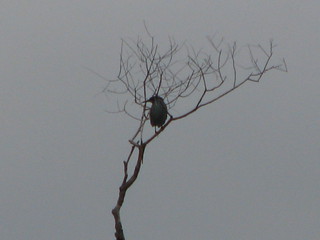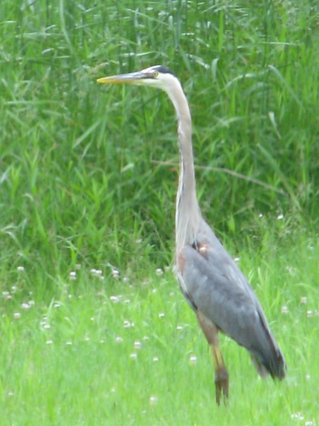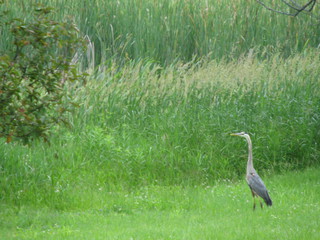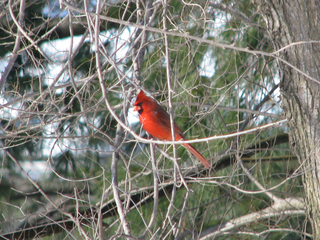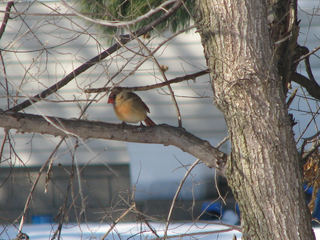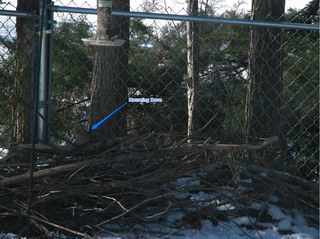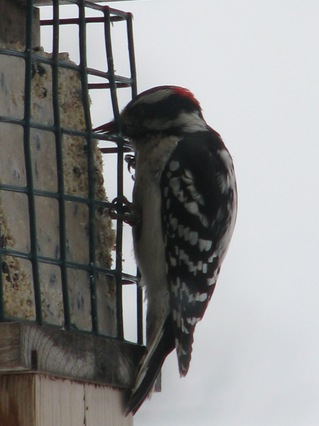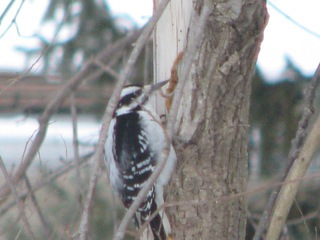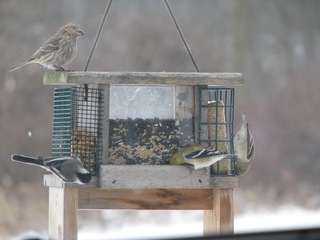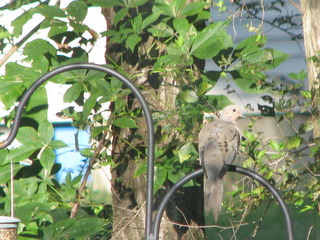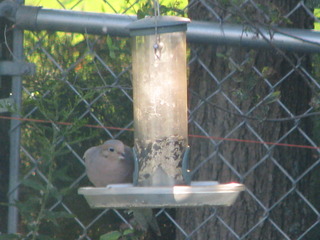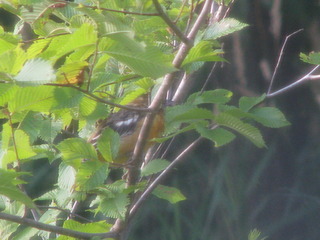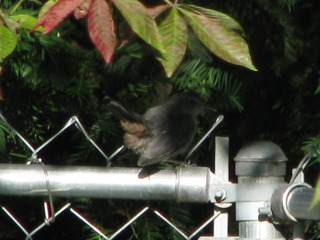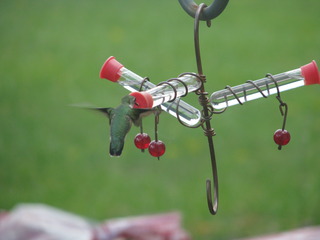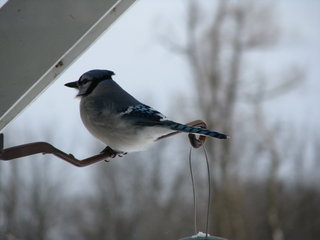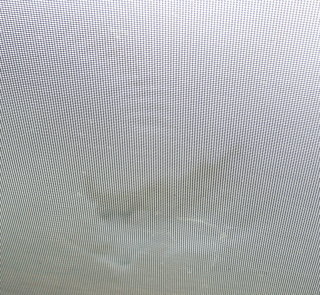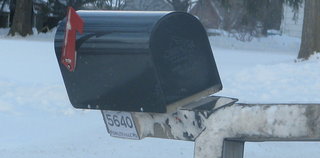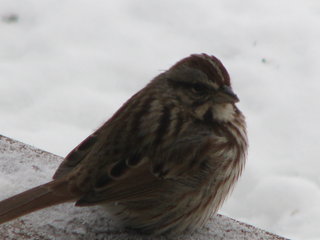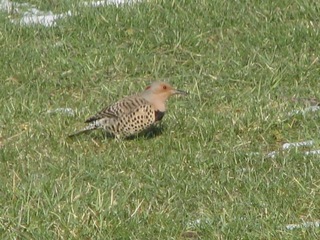
Northern Flicker. I like these guys because of their feathers. They're very striking. They're also neat because they're woodpeckers that don't peck holes in trees. They eat mostly ground insects.
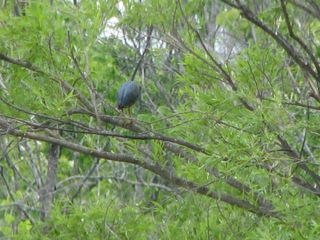
Most summers, the pond is visited by 2 species of heron (that I know of). Most often, we see a Great Blue Heron (known, of course, as "Big Blue"). Occasionally, we see a
Green Heron, like this one ("Sparty," of course). Not the best picture, I know. I've learned to get a picture as soon as possible, and
then worry about getting a good one. Too frequently, the bird leaves before posing. Which is what happened this time.

Eastern Kingbird. These are insect eaters, and this photo shows characteristic behavior. They perch in the open, like on the birdfeeder stand, and launch themselves at passing insects.
Yes -- this is the image in the blog's banner, now.
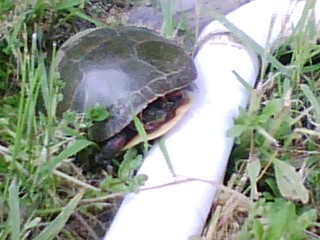
This is either a
Red-Eared Slider or a
Painted Turtle (I think -- it's not a bird, anyway!). The species look similar to me, and I don't remember distinguishing marks. All I have to go on is this camera-phone image. Saw this guy wandering the flowerbed (that white PVC pipe is the outflow from the sump). Helped him across the driveway a few days later (Nicole was due to return home and I didn't want a squashed turtle). Was slightly worried about his ability to navigate the high grass, cat-tails, etc. surrounding the pond. There was no cause for concern. I placed him at the edge of the brush and he was gone in seconds. I was amazed at his ability to climb over obstacles.
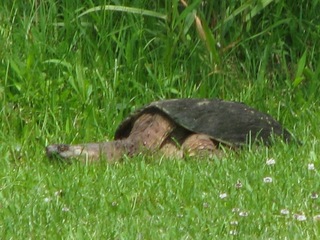
I heaved a heavy sigh, on Thursday afternoon. A non-bunny entity was traversing the yard. As low as it was, I assumed it was a 'chuck. But I decided to put the binoculars on it, before dragging out the rifle.
I was much surprised. This is a full-grown
Common Snapping Turtle. I estimate the length of his shell at 18". For reference, he wouldn't fit in my dutch oven. I took a few pictures from the porch, but they weren't satisfactory. (If you know the yard, he's between the Willow and the pond.) I figured I could get closer, if I was careful, without disturbing him. That netted this image, and the next:
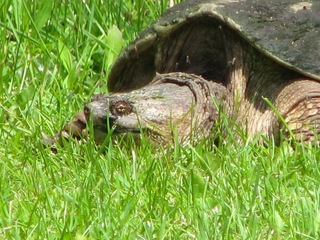
I really wanted a decent close-up. I think this is acceptable. (48x magnification -- I'm not really close.) I didn't get any closer. You can see in this image he's partially retracted his head and is eyeing me. I took that as an indication I was disturbing him, and went back inside.
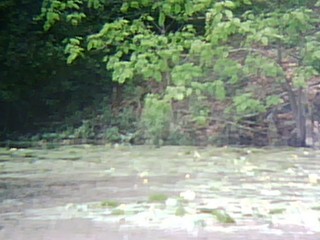
We found ourselves in Brighton, over the weekend. This is a picture I took with my phone's camera, through my monocular. I'd read of people taking pictures simply by holding a digital camera to the eyepiece of a 'scope. So I tried it. I include it as a curiosity, but mostly as an excuse to mention the swallows we saw nesting in tree cavities. I think they were
Tree Swallows, but I'm not sure. The cavities looked man-made, as well. Still, very cool to see. They were too high in the tree to get a decent picture with the phone; which is what led me to try the phone+monocular stunt. The combination had sufficient "reach" but was too difficult to hold steady on rapidly arriving and departing birds. I suppose I could have photographed an adult apparently feeding nestlings, but who wants to look at a picture of a bird's butt hanging out of a hole in a tree?
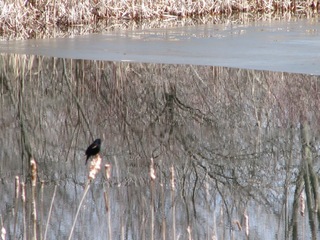
Lastly, I found this while cleaning-out iPhoto. It's artsy-pretentious, with me screwing-around with reflections, depth-of-field, etc. But what's the point of having a blog if you can't put stuff like this on it? :-)
